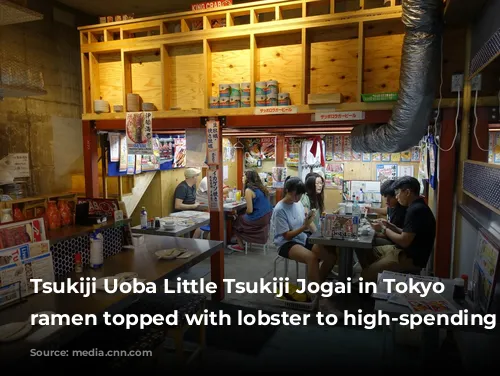Imagine yourself navigating the bustling streets of Tokyo, confidently ordering sushi in fluent Japanese. You’re blending in with the locals, enjoying the vibrant atmosphere, and feeling like a seasoned traveler. This might sound like a dream, but it could soon become a reality for many tourists looking for better deals in Japan.
The Land of the Rising Sun has always welcomed visitors with open arms, but the recent tourism boom has brought new challenges. A combination of pent-up travel demand and a weakening yen has pushed some businesses to consider charging different prices for locals and tourists.
A Balancing Act: Serving Locals and Tourists
The influx of tourists has put a strain on many businesses, especially small, local establishments. Restaurateur Shogo Yonemitsu, who runs a popular all-you-can-eat seafood grill in Tokyo’s Shibuya district, explains the dilemma: “It’s incredibly tough serving foreigners, and we’re simply overwhelmed.”
Yonemitsu, who doesn’t charge tourists extra, instead offers a discount to local customers. “We need this system to manage costs,” he explains. While some argue that this differential pricing is discriminatory, Yonemitsu believes it’s a necessary solution to keep his business afloat while still catering to his loyal local clientele.
The Tourist Tsunami: Adapting to a New Reality
Japan’s reopening after pandemic restrictions has unleashed a wave of tourism. Visitor numbers have reached record highs, surpassing even pre-pandemic levels. This has prompted local authorities to implement various measures to mitigate the impact of overtourism.
Tourist taxes, visitor limits, and even alcohol bans are being implemented in an effort to manage the flow of visitors. Some areas, like the scenic foothills of Mount Fuji, have even resorted to installing giant nets to restrict access to popular viewpoints.

A Global Trend: Pricing for the Local Experience
Differential pricing, while a relatively new phenomenon in Japan, is quite common in other parts of the world. This practice often goes unnoticed by tourists, as lower prices are typically displayed in the local language.
Elisa Chan, an expert in hospitality research, believes that differential pricing can be an effective strategy to deal with overtourism. “By charging tourists more, businesses can ensure that the surge in demand doesn’t drive away their loyal local customers,” she explains.
Navigating the Cultural Divide: A Question of Communication
While differential pricing might be a practical solution, it’s also sparking important conversations about cultural differences and the need for better communication.
Yonemitsu highlights the challenges of catering to tourists with limited English skills. “Some people criticize us, saying we don’t do this in their countries. But think about how limited Japanese people’s English is. We’re not a tourism superpower yet, and we’re struggling to provide excellent service with our language limitations. It’s incredibly stressful,” he says.
Finding a Balance: The Future of Tourism in Japan
The future of tourism in Japan hinges on finding a balance between welcoming visitors and preserving the local experience. While some businesses are embracing differential pricing, others are exploring more creative approaches.
Shuji Miyake, owner of a Tokyo izakaya, offers a premium ramen dish marketed specifically to tourists, who he believes are more willing to try new things. Meanwhile, some tourists, like Australian visitor Phoebe Lee, are sympathetic to the challenges facing local businesses. “I wouldn’t mind paying a little extra if it helps local businesses continue providing amazing experiences and preserve Japan’s unique culture,” she says.
As Japan grapples with the influx of tourists, the country’s hospitality industry faces a crucial decision: will it continue to embrace a one-size-fits-all approach or will it adopt a more nuanced strategy that prioritizes both local needs and the global appeal of Japan’s unique culture?

